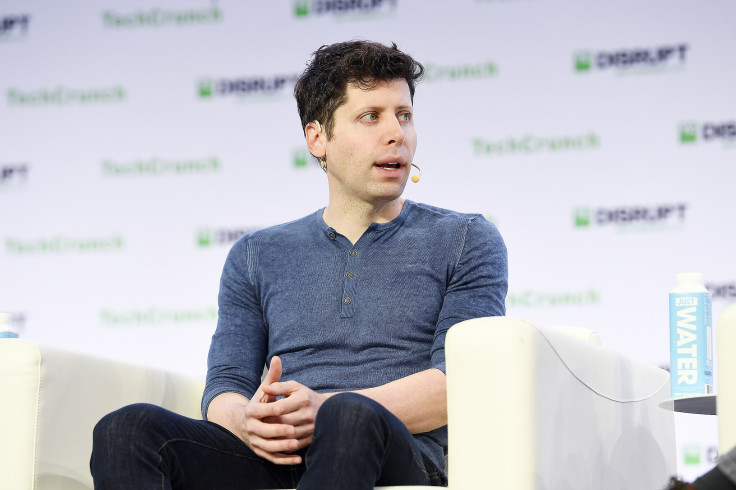
Renowned British-American designer Jony Ive and OpenAI's CEO Sam Altman are set to recruit departing Apple iPhone design head Tang Tan, who would reportedly be brought in to work on a new artificial intelligence (AI) hardware project.
Tang Tan will join Ive's design firm LoveFrom, according to Bloomberg's Mark Gurman. As part of the LoveFrom team, Tan will be working on an Altman-backed hardware project which focuses on creating devices that adopt the latest deep learning technology.
Tan will be leaving Apple in February 2024, but reports suggest his duties have already been divided up. Educated at MIT and Imperial College London, Tan was in charge of Apple's main products. There are no prizes for guessing, his departure will have a significant impact on product development.
How Tang Tan will help improve LoveFrom products
While it is unclear whether Tan's departure will lead to changes in the design direction of future Apple products, people familiar with the matter claim that the outgoing Apple executive will play a key role in shaping the look and capabilities of new LoveFrom products.
Altman, on the other hand, will reportedly provide the software that will power these products. The word on the street is that these purported products are currently in the early concept phase. Interestingly, neither OpenAI, LoveFrom nor Apple have put rumours surrounding Tan's role in Ive's design company to rest yet.
"What is clear is that @sama and OpenAI want to build an AI device," says @munster_gene on reports that $AAPL's outgoing design chief, Tang Tan, is teaming up with Jony Ive and Sam Altman. pic.twitter.com/ZxsczBfsVc
— Last Call (@LastCallCNBC) December 27, 2023
To those unaware, Ive formed LoveFrom after leaving Apple in 2019. While working under Apple co-founder Steve Jobs, the designer created some of the most iconic Apple products including the iMac, iPhone and iPad. While he was expected to leave Apple, details about the company he would join were few and far between until now.
Ive's successor, Evans Hankey, left Apple after a few years in the product design chief role. Overall, nearly fourteen of Ive's former team members quit Apple in 2019, and only about a half dozen still remain. Over twenty former Apple employees have followed in Ive's footsteps and joined LoveFrom.
Another member of Ive's industrial design team at Apple, Shota Aoyagi, has just started working at LoveFrom after leaving the Cupertino-based tech giant. Another important user interface (UI) design leader, Patrick Coffman, has also left the company.
The OpenAI board decided to remove Altman from his CEO role in November but had to reinstate him as the company's chief executive due to pressure from OpenAI employees. While an earlier report claims the board fired Altman to stop him from releasing a perilous AI model called Q*, other reports suggest he was fired for raising money for other efforts.
According to Bloomberg News, one of these efforts included a project with Ive. Reportedly, Altman had requested the chairman of SoftBank Group Corp. Masayoshi Son to invest billions of dollars in the new company.
Projects in the concept stage include devices for the home, Fortune reported. It is also worth noting that LoveFrom has already formed an impressive roster of high-profile clients including Moncler SpA, Ferrari NV and Airbnb Inc.
Aside from this, the firm had a 3-year deal with Apple to continue providing consulting services. Regrettably, that relationship came to an end in 2022.
OpenAI, Microsoft sued for copyright infringement
While Apple has grappled with longstanding issues, Altman's AI startup has encountered its own challenges, the most recent being a lawsuit filed by The New York Times.
The New York Times has sued Altman-led OpenAI and its rival Microsoft for copyright infringement. Notably, Microsoft has previously passed the blame to end users, insisting that it shouldn't be held responsible if people use AI tools like Copilot to infringe on copyrighted material.
The New York Times sued OpenAI and Microsoft for copyright infringement, a new front in the debate over the use of published work to train AI. https://t.co/u8qZ247dCl
— The New York Times (@nytimes) December 27, 2023
The Times is the first major US-based media organisation to sue the companies that create AI-powered tools over copyright issues associated with its written works.
According to the lawsuit, which was filed in Federal District Court in Manhattan, automated chatbots have used several articles published by The Times for training.
While the suit does not mention an exact monetary demand, it says the defendants should be held responsible for "billions of dollars in statutory and actual damages" related to the "unlawful copying and use of The Times's uniquely valuable works".
!["[T]he First and Fifth Amendments Require ICE to Provide Information About the Whereabouts of a Detained Person"](https://images.inkl.com/s3/publisher/cover/212/reason-cover.png?w=600)






